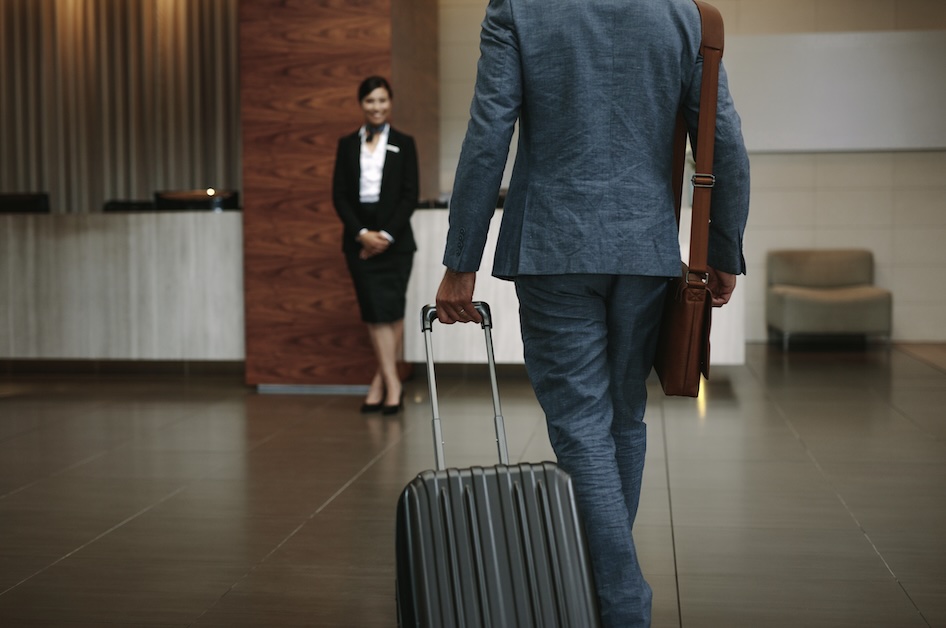
As organizations plan for the coming year, the most successful travel programs focus not just on cutting costs but on delivering meaningful value to travelers while maximizing return on investment. Five areas stand out as opportunities to make a real difference: airline agreements, unused ticket management, online booking tool audits, frequent traveler programs, and traveler surveys. By strategically evaluating these elements, travel managers can ensure policies are up-to-date, travelers are satisfied, and no opportunity for savings or convenience is missed.
1. Airline agreements: Improving outcomes through review
.png)
As airlines evolve their programs, revisiting your corporate agreements ensures your company continues receiving optimal benefits. Paul Foster, strategic consultant at Christopherson, noted that airlines are working to simplify agreement structures, making it easier for organizations to manage them.
Airline agreements generally fall into three categories:
Corporate Sales Agreements (CSAs)
CSAs are designed for companies with significant annual air spend—usually over $1 million. These programs often include upfront percentage discounts applied at the point of sale and may include “market-specific segments” where airlines incentivize shifting business away from competitors. Foster explained that CSAs usually have a fairly large commitment requirement and are defined for one to three years, depending on the airline’s structure.
Master Service Agreements (MSAs)
For mid-sized programs, the MSA offers similar benefits with lower thresholds—typically $300,000 to $1 million in annual spend.
“Your upfront percentage discounts on these tickets, while still there, may not be as significant as a CSA,” Foster said, noting that they often include targeted opportunities for shifting market share on specific routes.
Small Business Agreements (SBAs)
Smaller organizations can still take advantage of airline partnerships through SBAs—a frequently overlooked option. While these programs don’t provide upfront discounts, they reward companies for ongoing loyalty through perks such as complimentary tickets, discounts, or name change assistance.
“This is open to any organization, whether you’re a one-person company or a 15-person company,” Foster explained. “The nice thing about this is that it’s earned at the company level and does not erode into any of the traveler programs.”
2. Unused ticket management: Turning lost value into savings
Unused airline tickets can quietly eat away at a company’s travel budget. That’s why travel managers must carefully track and manage them.
“Approximately 10% of your travel spend is tied up with unused tickets,” Foster said.
That means a significant portion of your budget may be sitting on the table, waiting to be reclaimed.
To make the most of these funds, Foster recommends first understanding the terminology and status of unused tickets.
Each ticket’s classification determines what can—and can’t—be done with it.
Types of unused tickets
.png)
Foster outlined several common statuses and what each one means for travel managers:
Open: A fully unused, non-refundable ticket that can be applied toward a future flight.
- Must be used within one year of the original purchase date.
- May be transferable under certain conditions, depending on the airline.
Transferable: Allows the ticket’s value to be reassigned to another traveler.
- Especially useful when an employee leaves the company.
- Airline rules and fees for name changes vary.
Partial: When part of a trip (e.g., the outbound flight) was used, but the return was canceled.
- May still have remaining value, depending on the airline.
Residual value: The leftover balance when an unused ticket is exchanged for a less expensive flight.
- For example: a $600 unused ticket applied to a $400 flight may leave $200 in residual value for future use.
- Not all airlines honor residual balances.
Expired: A ticket that has passed its one-year validity period.
- Holds no remaining value once expired.
Suspended: Occurs when a traveler fails to cancel their flight before departure.
- Even fully refundable tickets may lose all value in this status.
- Foster cautioned: “If the trip is canceled, please notify either us as the TMC or the airline directly.”
The “suspended” status, Foster noted, is becoming more common and more problematic.
“This is very key because this is becoming more and more prominent,” he said. “If you have a reservation and the travel needs to be canceled, but you don’t actually notify the TMC or the airline that you’re canceling it, they will put that in a suspended status.”
3. Online booking tool audits: Ensuring policy alignment and traveler support

Conducting regular online booking tool audits is an effective way to keep your travel program aligned with current policies and traveler needs. As Foster noted, “It’s a very good idea to do regular booking audits” because travel policies evolve over time, and booking tools must evolve with them. Policy changes, spending limits, and organizational priorities often shift, and “a lot of times the policy changes, but we forget to make those relevant changes within the booking tool.”
A booking tool audit helps ensure your configuration continues to support cost-effective strategies and preferred supplier agreements. Many tools apply “visual stimulation or visual guilt,” which reinforces policy-compliant choices by highlighting preferred vendors and reminding travelers why those options matter. This reinforcement improves compliance and helps drive spend toward negotiated agreements.
Audits can also uncover gaps in accounting and reporting. As Foster explained, they help determine whether you are “capturing the necessary information on your backend reporting” and allow your team to adjust tool settings so reporting aligns with new areas of focus that “maybe you weren’t focusing on at the beginning of the program.”
In addition, audits can reveal patterns of out-of-policy booking. If many travelers are bypassing the tool, it may be a sign to refresh the travel policy, adjust configuration, or improve traveler communication. Booking tools offer valuable opportunities for targeted messaging—such as announcing new agreements or encouraging sign-ups for preferred programs—because of the visual messaging that you can display to travelers.
Ultimately, online booking tool audits contribute to a better traveler experience. They help identify feedback coming in and highlight opportunities to make the booking process smoother and more intuitive.
“We really want the traveler to have a very good user experience,” said Foster. "And ensuring the tool remains current and user-friendly is a key part of that effort."
4. Frequent traveler programs: Maximizing benefits without added costs
Encouraging employees to join frequent traveler programs is one of the simplest ways to enhance the travel experience without adding a dime to your organization’s expenses.
Cameron describes these programs as a “double dip” opportunity—allowing both the company and its travelers to benefit from the same program.
Practical tip: Travelers can also maximize loyalty benefits when booking through online tools like Concur. When employees add their frequent traveler numbers, Cameron explained, the system can recognize their elite status and assign preferred or upgraded seats.
A few examples of loyalty programs:
Delta SkyMiles: Free to join, with miles that never expire. Members can use miles for seat upgrades, checked bags, or even gifting to family members.
Marriott Bonvoy: This hotel loyalty program allows travelers to earn points for free stays or experience upgrades. Members also benefit from free Wi-Fi, preferred rates, and mobile check-in, an increasingly valuable feature that reduces some of that friction for travelers on the go.
The Parking Spot: Get discounted rates, reward parking, and optional add-on services such as car washes, which offer convenience for frequent travelers.
For travel managers, promoting these programs can be as simple as sharing enrollment links with employees.
“You could just copy that link, send it to your travelers, and make them aware of the programs that you’re willing to promote,” Cameron suggested.
5. Traveler surveys: Turning feedback into action
One of the most effective ways to improve a corporate travel program is also one of the simplest: Ask your travelers what they think.
“These are a great way—in fact, it’s one of our most highly recommended ways—of trying to decide what’s important to do next in your travel program,” said Cameron.
Traveler surveys help organizations uncover what’s working well and where pain points exist.
“If you reach out to your travelers and get some feedback, you can learn—do they have confusion over your policy and don’t understand it? Are they frustrated with certain aspects that you could tweak? Do they just need training on how to use the program?” Cameron explained. “It really helps you understand how you can better support your travelers.”
Christopherson provides a flexible survey template with more than 80 sample questions to choose from, though Cameron recommends keeping things concise.
“We recommend you ask about 20 questions so that it’s not too time-consuming for the traveler,” he said.
These questions can be customized to each organization’s goals, from measuring traveler satisfaction to identifying compliance gaps.
Traveler surveys can help companies:
- Pinpoint policy confusion and uncover where travelers need clarification or additional training.
- Identify behavioral trends, such as travelers booking outside approved channels.
- Align travel policies with traveler priorities like convenience, comfort, or loyalty program preferences.
- Guide supplier negotiations by revealing which amenities or services matter most to employees.
- Strengthen risk management by ensuring travelers know how to access emergency support.
A recent client survey revealed just how valuable this feedback can be. When asked how they typically booked their business trips, most travelers used the company’s online booking tool, but a surprising number still booked directly with vendors.
“That was an opportunity to bring that into the travel program and get visibility to that,” said Cameron. “So that was kind of a training opportunity there.”
Surveys can also reveal mismatches between company priorities and traveler preferences. For instance, many respondents in another client’s survey cared less about ticket price and more about schedule convenience or airline preference, especially when frequent traveler points were involved.
“They weren’t nearly as concerned about price, although your policy is probably very concerned about price,” Cameron noted.
Other survey insights can inform supplier negotiations. “You might be negotiating for parking,” Cameron said, “but if your travelers really value high-speed internet or gym access instead, it might tweak the way you negotiate your hotels and what you ask for in your RFPs. No sense asking for something that your travelers don’t value and won’t use.”
Surveys can also uncover gaps in risk management and emergency support. When travelers were asked how they handled emergencies on the road, many said they managed the situation themselves.
“That’s great that they’re comfortable doing that,” said Cameron, “but it makes you wonder—did they not know how to reach out and get the help they needed?”
Those findings often lead to improved communication about available safety resources. Christopherson partners with risk management providers like Crisis24, which offers a mobile app with a panic button, global response support, and even emergency extraction services.
“We’ve found over and over again that many clients have some service like this—but their travelers don’t have any idea how to reach out to them when there’s a need,” Cameron said.
His advice: include emergency contact details in every itinerary so travelers always have access when it matters most.
Ultimately, traveler surveys turn feedback into action by helping companies fine-tune policies, improve satisfaction, and strengthen safety programs. As Cameron summed it up, they drive a lot of actionable intelligence that leads to smarter, safer, and more efficient travel management.
Conclusion
A well-optimized travel program balances cost control, efficiency, and traveler satisfaction. By reassessing airline agreements, managing unused ticket value, auditing online booking tools, promoting loyalty programs, and leveraging traveler feedback, organizations can build stronger, more rewarding travel programs.
These five focus areas provide clear, actionable opportunities to increase value—ensuring every trip contributes to a better experience for travelers and a stronger return for the business.
Looking for more actionable tips? Check out our travel manager checklist and traveler checklist.
► You’ll also like: 9 common business travel challenges—and how we help solve them






.png)